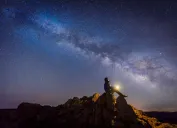5 Amazing Things You Can See in the Night Sky This June
Experts say these are the must-see astronomical events of the month.

There's never really a wrong time of the year to look up at the night sky and take in the sights. But with the weather warming up for summer, June can be one of the most comfortable months for getting cozy outside and spending an evening stargazing. And thankfully, there are even some extraordinary sights in store over the coming weeks. Read on for the amazing things you can see in the night sky this June, according to experts.
READ THIS NEXT: The Next Total Solar Eclipse Will Be the Last Until 2044, NASA Says.
1
The Strawberry Full Moon
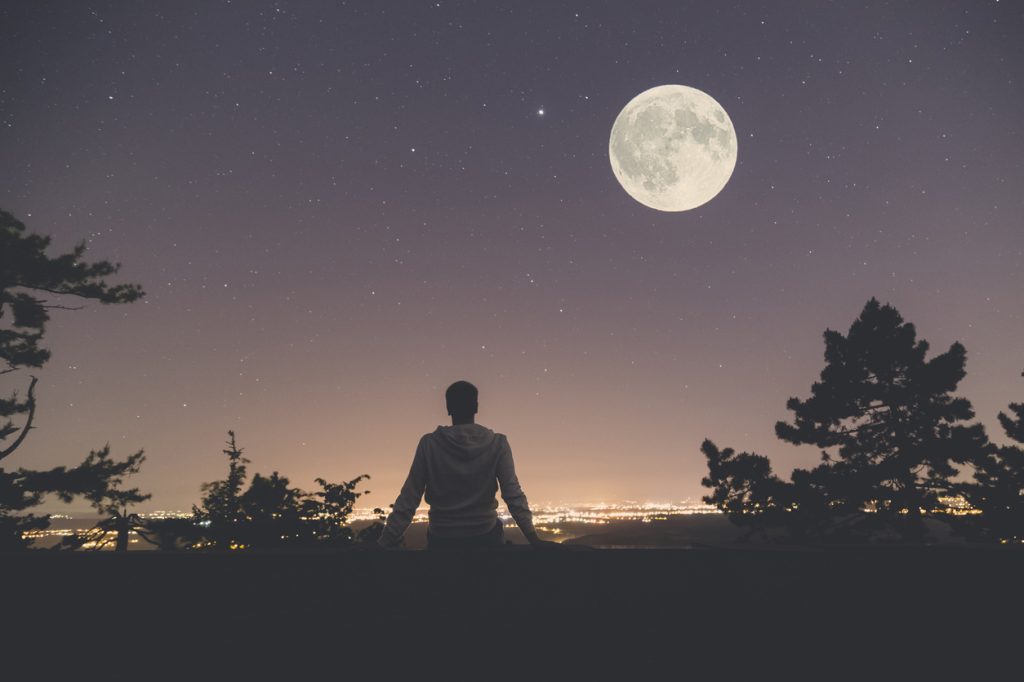
The moon is far and away the most prominent object you can see overhead on any given night. And this month, experts say it's worth making a point to see it when it's at its brightest.
"The full moon in June is known as the Strawberry Moon because it coincides with the strawberry harvest," Chris Klein, amateur astronomy advisor and founder of AstroRover, tells Best Life. "It's a beautiful sight rising in the sky on June 4, with its golden glow and large size."
He also adds that even though you can see it without binoculars or a telescope, using them can help you see its craters and mountains in detail.
2
Our neighboring planets
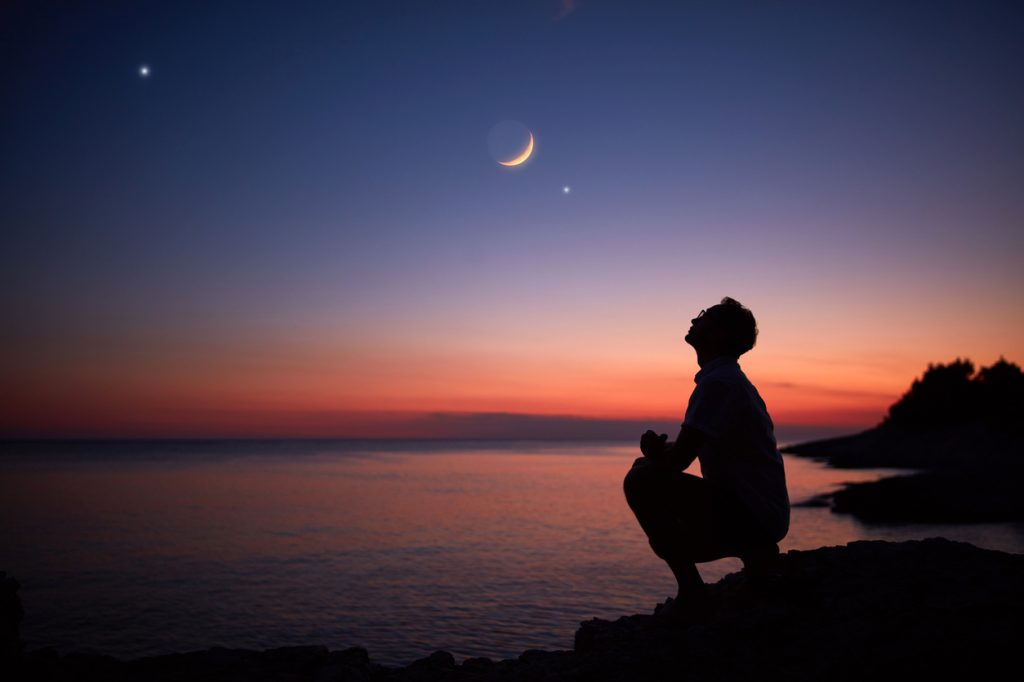
While a lot of what we see twinkling at night is made up of stars that are thousands of lightyears away, some of our closest neighbors also shine prominently. And during June, you'll have an opportunity to easily spot a pair of them.
"Both Mars and Venus are visible after sunset, low in the west in the constellation of Cancer," says Valerie Rapson, PhD, assistant professor of physics and astronomy at the State University of New York at Oneonta. "Venus will be the brightest object in the evening sky, aside from the moon. Mars will be the fainter red dot slightly higher in the sky."
Rapson explains that as June progresses, the two planets will inch closer to each other in the sky and eventually shift into the constellation of Leo.
"Their orbits around the Sun make them appear as if they are headed towards a collision, but in reality, they will always remain many tens of millions of miles apart in space," she says.
READ THIS NEXT: The 10 Best Destinations for Stargazing in the U.S.
3
The Bootid meteor shower
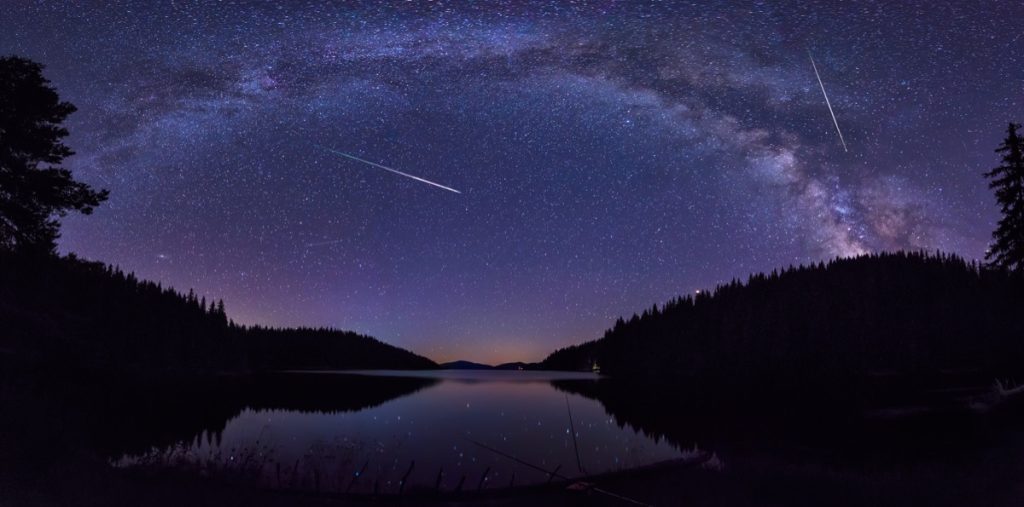
Meteor showers can be one of the most exciting shows put on by nature. Fortunately, June will offer another opportunity to catch "shooting stars" when the Bootids begin towards the end of the month.
"It's a meteor shower active from June 26 to July 2, with the peak occurring around June 27 and 28," says Klein. "While it's not a strong meteor shower, it's still worth looking out for because it can produce bright fireballs."
4
The stars Arcturus and Spica
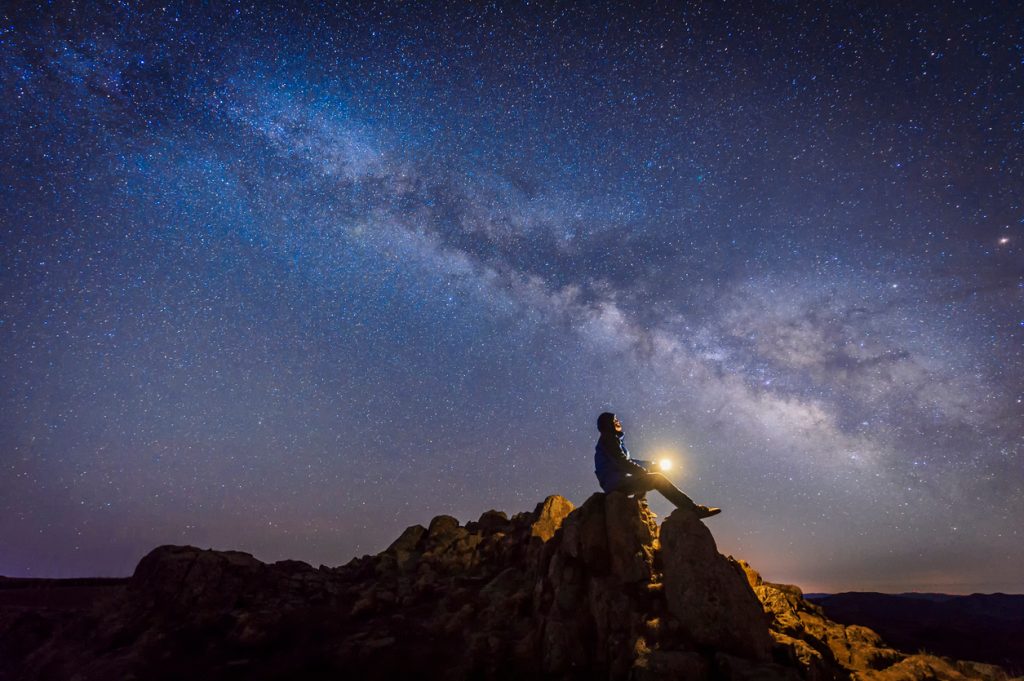
You may not realize it, but the stars above change with the seasons. And as summer kicks off, two new additions will become visible to stargazers below.
"Two of the brightest stars in the southern sky are Arcturus and Spica. Arcturus is an evolved red giant star in the constellation Bootes, while Spica is a massive blue star in Virgo that is still fusing hydrogen to helium in its core," says Rapson.
Fortunately, she says you can use another easily spotted constellation as a guide to locate them.
"Find the Big Dipper's curved handle, and follow the arc down to the orange star Arcturus. Then keep going along that path until you hit the bright blue star, which will be Spica. The common phrase we tell everyone to remember is that you 'arc to Arcturus, and sail on down to Spica,'" Rapson says.
For more advice on fun things to see delivered straight to your inbox, sign up for our daily newsletter.
5
The summer solstice

Usually, daylight doesn't make for a very exciting astronomical event. But Klein says it's worth commemorating the shortest night of the entire year that's coming up.
"June 21 marks the beginning of summer and the longest day of the year in the Northern Hemisphere," he explains. "It's a time of celebration in many cultures and is associated with renewal and fertility. It's interesting to observe because the sun rises early and sets late, giving you more time to enjoy the outdoors or plan activities."
